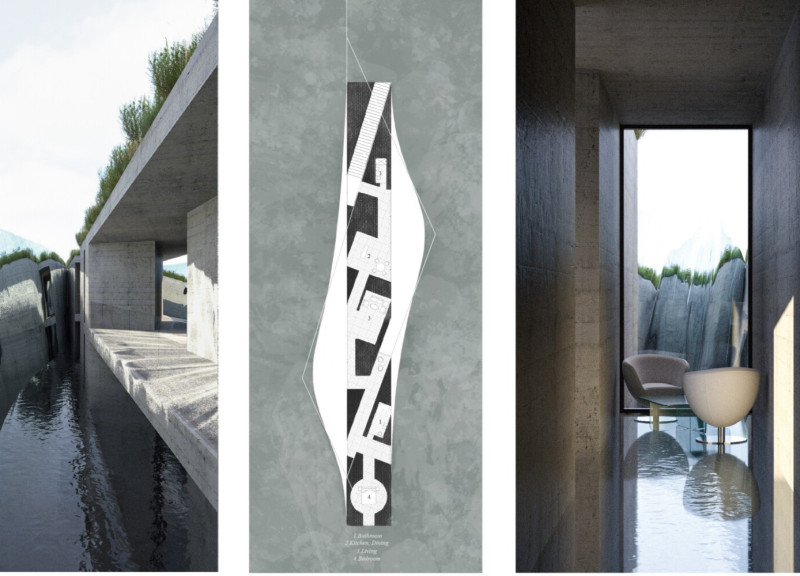5 key facts about this project
The project unfolds with an emphasis on open spaces, encouraging natural flow and movement throughout. The design incorporates a central atrium that serves as the heart of the building, allowing for ample daylight to permeate the interior. This aspect not only provides a welcoming ambiance but also promotes a sense of community among users. The surrounding walls are characterized by expansive glazing, offering panoramic views of the landscape while blurring the boundaries between indoors and outdoors. Such a design approach emphasizes transparency, inviting the environment into the structure.
Materiality plays a crucial role in the project, reflecting a combination of contemporary and traditional elements. A predominant feature is the use of locally sourced stone, which infuses the building with a sense of permanence and connection to the geographic locale. This choice also enhances thermal performance, contributing to energy efficiency, a key consideration in modern architectural practice. Complementing the stone, substantial use of glass facilitates natural light and creates a dynamic façade that changes with the shifting patterns of the day.
The roof structure is particularly noteworthy, showcasing a unique geometrical design that not only provides shelter but also aids in rainwater management. This innovative feature, while functional, also adds a sculptural quality to the building’s silhouette, drawing the eye from various perspectives. Moreover, green roofs and terraces are integrated into the design, enhancing biodiversity and providing additional recreational spaces for occupants. This thoughtful incorporation of vegetation not only contributes to aesthetic enjoyment but also serves crucial ecological functions.
In terms of accessibility, the project includes well-planned circulation routes, ensuring that all areas are easily navigable for people of diverse mobility levels. This aspect underscores the importance of inclusive design within architecture, enhancing the overall experience for all users. The careful planning of pathways, entrances, and communal areas reflects an awareness of how architecture influences social interactions and connections, fostering a sense of belonging and community engagement.
The interior spaces are intentionally flexible, allowing for varied uses throughout the day and catering to a diverse audience. From collaborative workspaces to secluded lounges, each area is meticulously crafted to meet specific needs while maintaining an overarching harmony in design. The use of warm, natural finishes enhances the welcoming atmosphere and promotes well-being among occupants.
This project stands out due to its commitment to sustainability and community-oriented design, reflecting contemporary architectural trends that prioritize environmental and social responsibility. The thoughtful use of materials, innovative structural elements, and a keen sensitivity to the surrounding environment collectively enable this architecture to resonate with its context while serving its intended functions effectively.
For a comprehensive understanding of the architectural plans, sections, and the underlying ideas, readers are encouraged to explore further details of the project presentation. Engaging with these elements will provide deeper insights into how the design evolved and the principles driving its creation, revealing the complexities and thoughtfulness embedded within this architectural endeavor.























